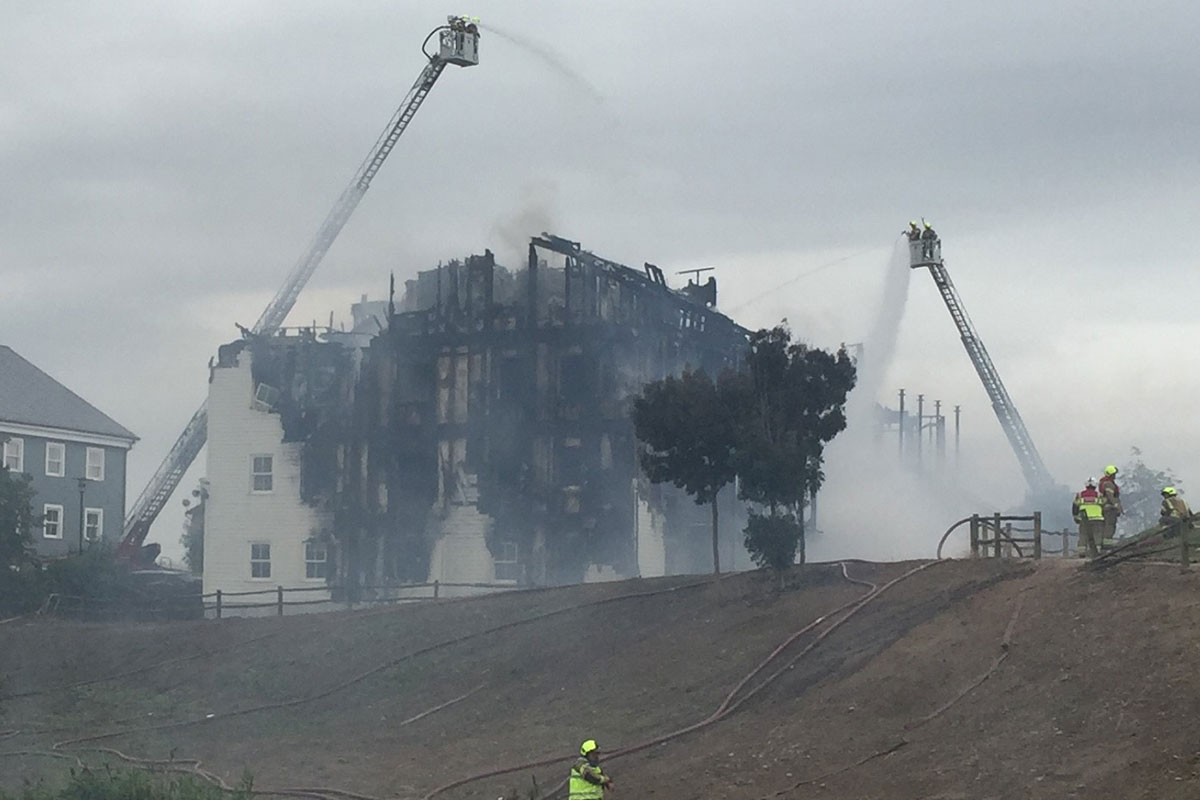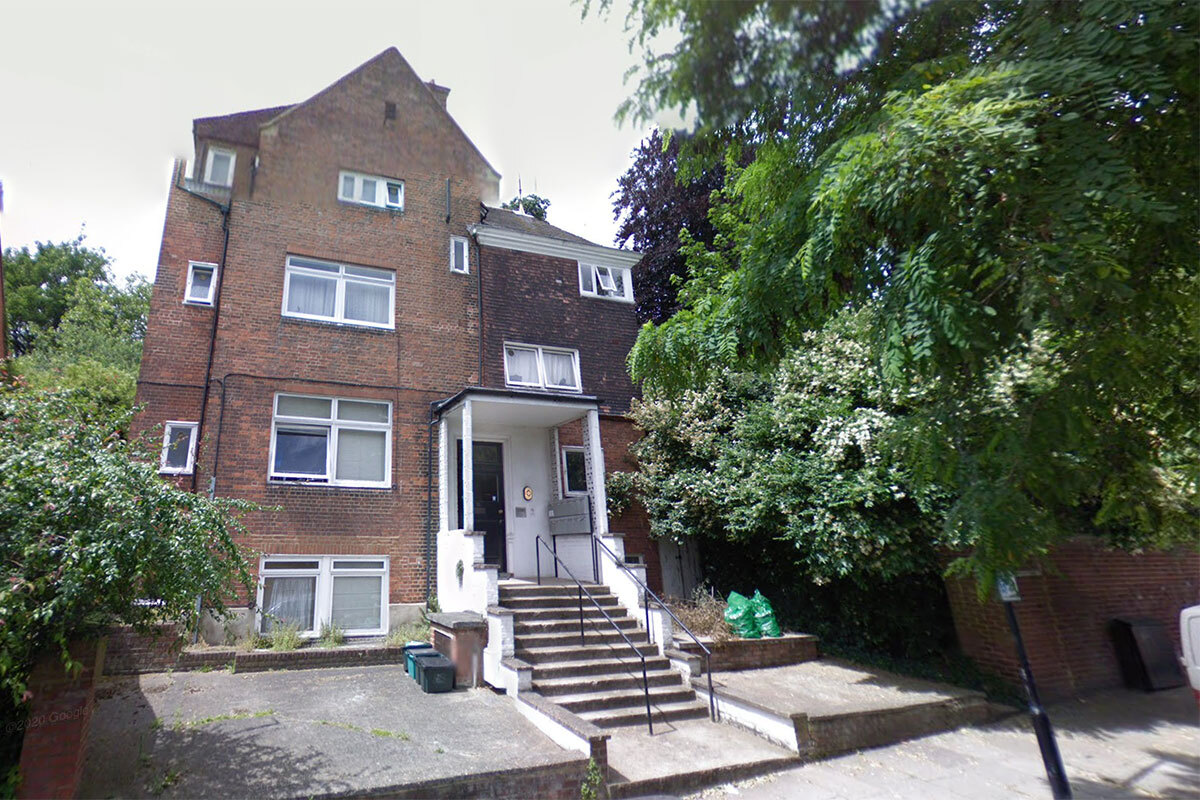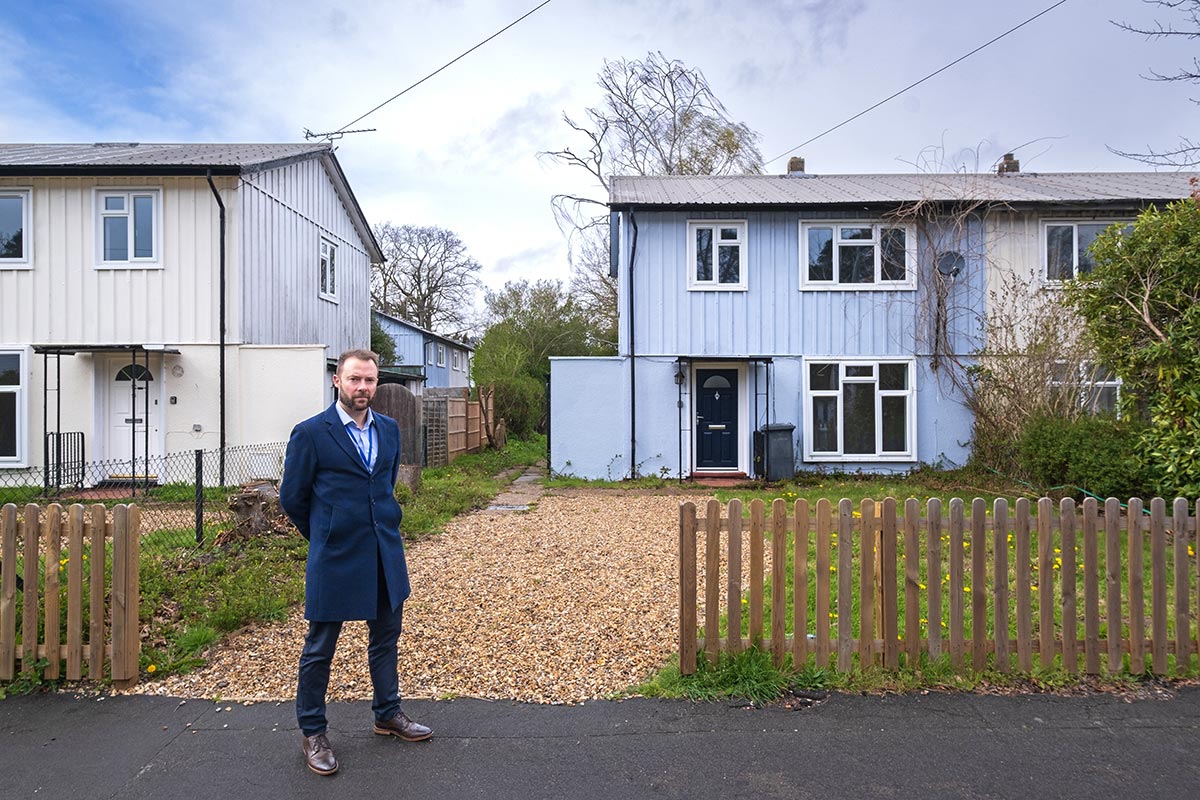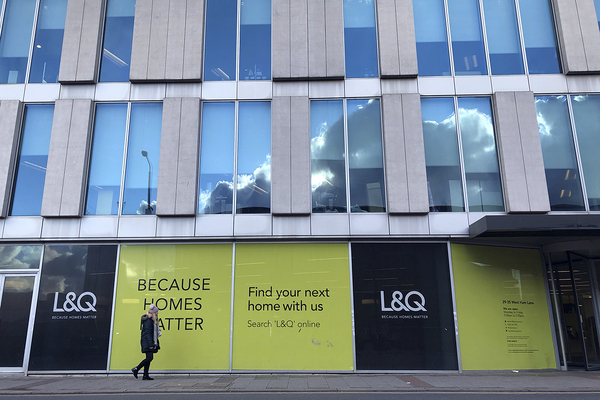You are viewing 1 of your 1 free articles
‘Damaged’ cavity barriers found on rebuild of timber-frame building destroyed by fire
Former residents of a timber-frame building destroyed by a fire in 2019 have expressed concern over reports of damaged cavity barriers in the rebuild project.
Richmond House, part of the Worcester Park Estate in south-west London, was burned to the ground in a devastating fire in September 2019, which destroyed all 23 flats and left 60 residents homeless.
It later emerged that cavity barriers in the timber-framed building were “defective” and “contributed nothing” to preventing the blaze from spreading into the internal structure and destroying the building.
Housing association Metropolitan Thames Valley Housing (MTVH) is overseeing a rebuild project on the same site, which will also use timber-frame construction.
But an update given to residents in April, seen by Inside Housing, revealed an inspection of the work by fire safety experts had revealed “wet or damaged cavity barriers” that “require replacing”, as well as “damaged fire board” which would also needed to be replaced.
In a statement, MTVH said it was “common for materials to become damaged” on a building site and the “identification and replacement of these materials is a common part of the quality assurance process”.
It added that the building would not be signed off and handed over if the issues were not rectified to an appropriate standard.
One resident, who did not want to give her full name, told Inside Housing that the issues were “a massive smack in the face”.
“The idea of going back into a flat where there is any possibility that it has the same safety issues is just not OK for us,” she said.
The rebuild of Richmond House is being carried out by contractor Boom Construction. The original building was built by developer Berkeley Homes in 2011 before being sold to MTVH, with all the flats sold to leaseholders as shared ownership properties.
The fire on 9 September 2019 utterly destroyed the building, despite firefighters arriving within nine minutes of the first 999 call. Some residents reported only narrowly escaping with their lives.
A report into the fire, prepared by consultancy Probyn Miers, revealed that flames were able to rip through a 16cm cavity between the building’s main structure and cement board external cladding, burning the lightweight timber frame that held the building up.
The report said the cavity barriers that were fitted to prevent fire spreading through this space were “defective” as they were “too small to close the cavity and they would have contributed nothing to control of the fire”, allowing the blaze to spread “almost unhindered both horizontally and vertically” through this cavity.
While some former residents have sold their lease back to MTVH, others have been living in temporary housing, continuing to pay off mortgages on their destroyed properties, waiting for the block to be rebuilt using insurance funding. The projected completion date is not until March 2024.
The resident who spoke to Inside Housing explained that she had been unable to afford to buy elsewhere.
The valuation offered by MTVH to buy out the 35% share of her flat dates to 2020, she said, but prices in London have risen sharply since then. “I probably wouldn’t even get a one-bed flat for that price without moving very far away from my friends or my work,” she said.
Residents were being supported by consultancy Newman Francis, which was helping them liaise with MTVH – but that contract has now been ended by MTVH.
“We don’t have anybody that fights for us and I’m by myself, so I can only do what I can do alongside work,” the resident added.
A spokesperson for MTVH said: “As part of our commitment to keep residents informed in a transparent way about the rebuild, we share monthly progress reports and invite them to visit site at key milestones.
“In any building site it is common for materials to become damaged as they tend to be more exposed to the elements.
“The identification and replacement of these materials is a common part of the quality assurance process, and MTVH has a clerk of works, employer’s agent, fire engineer and health and safety specialist on site ensuring any issues are picked up and rectified accordingly. If these issues are not rectified to an appropriate standard the building will not be signed off and handed over.”
On the issue of the contract with Newman Francis being ended, the spokesperson added: “We have also committed to continue to build upon the work undertaken by Newman Francis. We have appointed a dedicated customer liaison officer to support residents, as well as allocating a resident voice co-ordinator who works independently of the rebuild and customer service teams to provide impartial advice.”
Sign up for our fire safety newsletter
Already have an account? Click here to manage your newsletters












